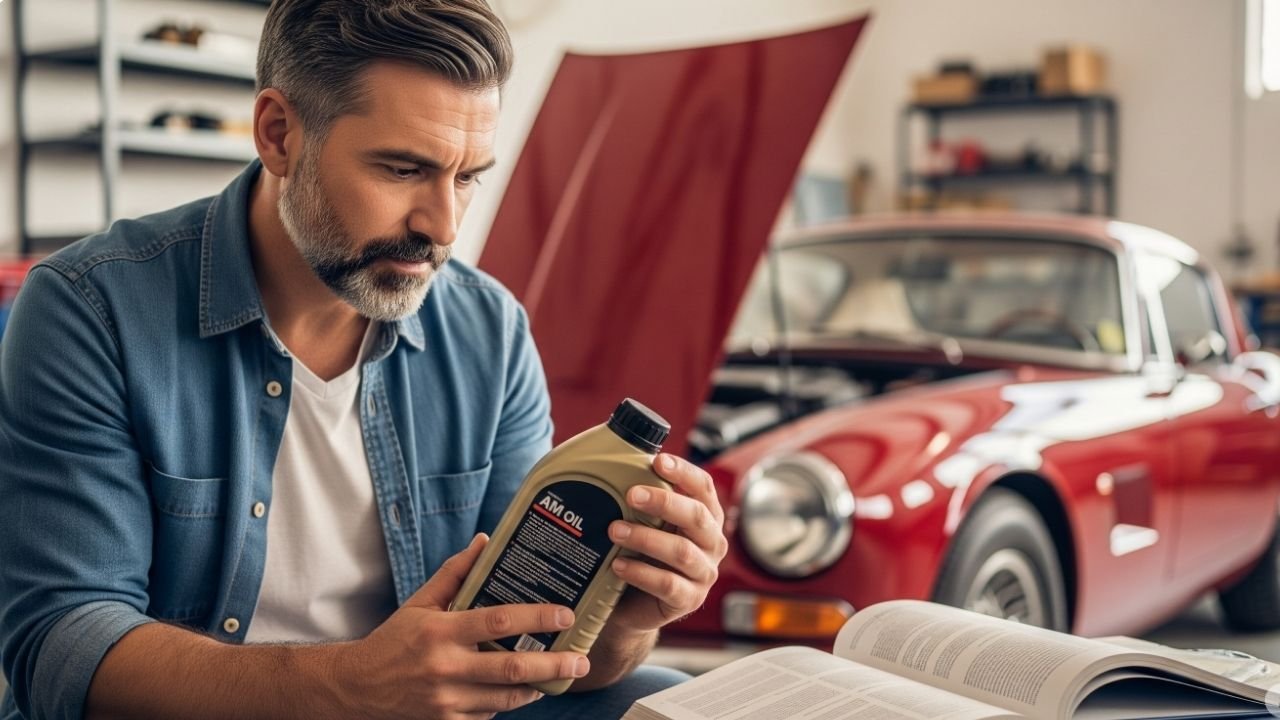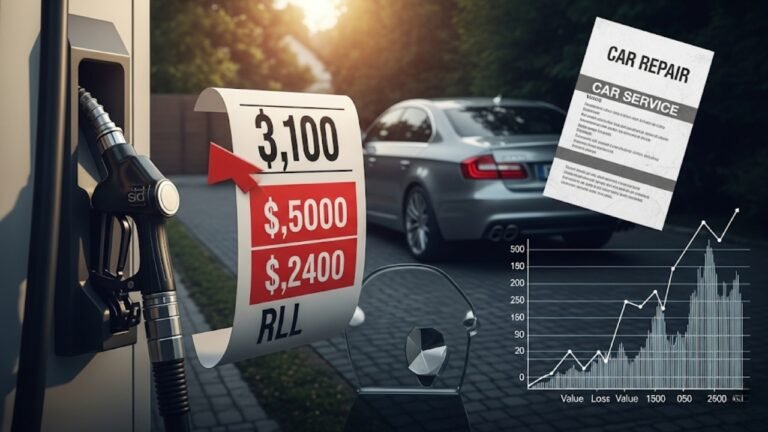How to Know What Oil to Use for Your Car

Think of engine oil like the blood in your veins. If it’s wrong, dirty, or missing—it can mess everything up. I still remember my uncle’s car stalling in the middle of a Dhaka traffic jam. We later found out it was all because he used the wrong oil. Who knew one small detail could cost so much?
Knowing how to know what oil to use for your car can save you money, protect your engine, and make your car run smoother than ever. But don’t worry—you don’t need to be a mechanic. With this guide, you’ll learn in simple words how to figure out the right oil for your car, why it matters, and how to never make a costly mistake again.
Let’s dive into the heart of it.
Understanding the Basics of Engine Oil
Before choosing the right oil, you should understand what engine oil actually does. It’s not just “juice for the engine.” It:
- Lubricates moving parts
- Cools the engine
- Cleans the inside
- Prevents wear and tear
- Reduces friction and rust
Without the right oil, your car’s engine has to work harder. That means higher fuel use, overheating, and even long-term engine damage. Knowing how to know what oil to use for your car begins with understanding oil types, grades, and specifications.
Types of Engine Oil: What’s the Difference?
There are mainly four types of motor oil. Let’s break them down like choosing tea:
1. Conventional Oil
- Think of it as regular tea.
- Basic, cheap, and works well for older engines.
- Not ideal for high-performance or newer engines.
2. Synthetic Oil
- Like premium Darjeeling or green tea.
- Refined, long-lasting, better for cold weather and high heat.
- Best for new cars, turbo engines, and extreme driving conditions.
3. Synthetic Blend Oil
- A mix of both worlds—like adding honey to black tea.
- Offers better protection than conventional but cheaper than full synthetic.
- Good balance for drivers who want more value for money.
4. High-Mileage Oil
- Specially designed for cars with 75,000+ miles (120,000+ km).
- Contains additives to reduce leaks, smoke, and oil burn.
- If your car is aging, this could be a perfect match.
How to Read Oil Viscosity (Example: 5W-30)
This is the most confusing part for many, but let me explain in easy words. The viscosity rating, like 5W-30, tells you how thick or thin the oil is in different temperatures.
Breakdown of 5W-30:
- 5W = Viscosity in winter (W stands for winter)
- 30 = Viscosity at 100°C (engine operating temperature)
The lower the first number, the better it flows in cold weather. The higher the second number, the better it holds up in heat.
| Viscosity Code | Best For Weather | Engine Type |
|---|---|---|
| 0W-20 | Extreme Cold | Newer engines |
| 5W-30 | Cold to Moderate | Most cars |
| 10W-40 | Warm Climates | Older engines |
| 15W-50 | Hot Weather/Racing | High-performance |
Understanding this code is key when figuring out how to know what oil to use for your car.
Consult Your Owner’s Manual (Seriously, It’s the Holy Book)
You might be tempted to ask Google or rely on a friend’s advice, but trust me—your car’s owner manual is the first and most reliable source. It tells you:
- The exact oil grade (like 5W-30 or 0W-20)
- The type of oil (synthetic, conventional, etc.)
- The change interval (every 5,000 km, 7,000 km, etc.)
If you don’t have the manual, check the manufacturer’s website. Most major brands like Toyota, Honda, Nissan, or BMW offer PDF manuals online.
This is the first and most accurate step in discovering how to know what oil to use for your car.
Consider Your Driving Habits and Climate
Your environment and habits can change your oil needs. Let’s look at how:
Driving Habits
- City Driving: Short trips, start-stop traffic → synthetic oil is better
- Highway Driving: Long-distance, stable speed → synthetic blend works well
- Aggressive Driving or Towing: Heavy engine load → high-performance synthetic oil is best
Climate Considerations
- Hot Climate (like Dhaka in April): Go for a higher second number (like 10W-40)
- Cold Climate (like North America winters): Use 0W or 5W to flow better in cold starts
Always factor these in when figuring out how to know what oil to use for your car. The right oil depends on more than just the brand.
Manufacturer Standards: API, ACEA & More
Engine oil labels aren’t just random letters—they mean something. Here’s a quick breakdown:
- API (American Petroleum Institute): Look for “API SN,” “API SP” – the latest and best standards.
- ACEA (Europe): If your car is European, ACEA A3/B4 or C3 could be relevant.
- ILSAC: North American standard (look for “GF-6” for fuel-efficient oils)
Look at your oil bottle for one or more of these seals. These standards show if the oil meets your car’s needs. Ignoring them could be like using water instead of coolant—cheap now, costly later.
The Role of Oil Additives
Oil isn’t just oil. It’s mixed with additives that clean, protect, and enhance engine performance. Some common ones include:
- Detergents: Clean up carbon and dirt
- Anti-wear agents: Protect from metal-on-metal contact
- Dispersants: Prevent sludge buildup
- Corrosion inhibitors: Fight rust
Additives are why synthetic oil is so powerful—it contains a carefully formulated mix designed for maximum engine health. When wondering how to know what oil to use for your car, always factor in what additives your engine might benefit from, especially if it’s older or under stress.
Top Oil Brands You Can Trust (And Why It Matters)
Now that you know the type of oil your car needs, the next big question is which brand to choose. Honestly, all oils are not made equal. Even if the label says “5W-30,” two brands can perform very differently based on quality, additives, and refining process.
Here are some trusted oil brands worth looking into:
Mobil 1
- One of the most widely recommended synthetic oils.
- Great for high performance and long engine life.
- Used in motorsports, trusted by luxury carmakers like Mercedes-Benz.
Castrol EDGE
- Famous for its Titanium technology.
- Offers maximum protection under pressure, especially at high RPMs.
- Ideal for sporty or turbocharged engines.
Valvoline
- Affordable yet very reliable.
- Has both synthetic and high-mileage formulas.
- Their Advanced Full Synthetic is a great all-rounder.
Shell Helix Ultra
- Designed with gas-to-liquid technology.
- Very clean and efficient—perfect for modern engines.
- Also offers options tailored for European cars.
Liqui Moly
- German-made, known for premium quality.
- Especially good for European brands like BMW, Audi, VW.
- Often more expensive but worth the investment.
Choosing a trusted brand ensures your oil meets or exceeds manufacturer standards. That’s key when figuring out how to know what oil to use for your car.
Common Oil Mistakes to Avoid
It’s easy to make a mistake when dealing with oil—especially if you’re rushing or relying on assumptions. Here’s a list of the most common errors and how to avoid them:
Using the Wrong Viscosity
Even if it’s a “better” oil, using 10W-40 when your car needs 0W-20 can cause more harm than good.
Mixing Oil Types
Avoid combining conventional and synthetic oils unless you’re using a synthetic blend. Mixing can mess up oil chemistry.
Overfilling the Engine
Adding too much oil can cause foaming and pressure issues. Always use the dipstick to measure.
Skipping Oil Changes
Even the best oil breaks down over time. Follow the oil change interval—every 5,000 to 10,000 km, depending on oil type and usage.
Trusting Cheap Brands
Cheaper brands often skip critical additives. It’s better to pay a bit more for long-term engine health.
By avoiding these mistakes, you’re well on your way to mastering how to know what oil to use for your car—like a pro.
How Often Should You Change Your Oil?
This question pops up a lot—and the answer isn’t the same for everyone. Here’s a simple breakdown:
| Oil Type | Driving Condition | Change Interval |
|---|---|---|
| Conventional | Normal (light use) | 4,000–5,000 km |
| Synthetic Blend | Mixed driving | 6,000–8,000 km |
| Full Synthetic | Long trips, heavy load | 10,000–15,000 km |
| High Mileage Oil | Older cars | 5,000–7,000 km |
Also, check the color and smell of the oil:
- Black and gritty = time to change.
- Burnt smell = may indicate overheating.
- Milky = could be coolant mixing in—see a mechanic.
Personal Experience: A Lesson the Hard Way
Let me share a quick story. My cousin drives a Toyota Corolla 2010. He used to buy the cheapest conventional oil from a local shop in Mymensingh, thinking all oils were the same. Within a year, his fuel efficiency dropped and the engine made knocking noises.
Eventually, a mechanic told him he should’ve been using 5W-30 synthetic due to his engine’s wear and city driving habits. After switching and doing a proper flush, the car felt smoother, quieter, and even the mileage improved.
So yes, your oil choice truly matters, and sometimes it’s the small things that make the biggest difference.
Signs You Might Be Using the Wrong Oil
Here’s how to know something’s not right:
- Engine runs louder than usual
- Strange knocking or ticking sounds
- Oil light flickers on your dashboard
- Poor fuel efficiency
- Oil burns too fast (check dipstick often)
If you see these signs, revisit the steps we’ve discussed. It could be as simple as the wrong viscosity or using an oil that doesn’t meet your engine’s age or mileage.
Frequently Asked Questions (FAQs)
1. Can I use synthetic oil in an old car?
Yes, if your engine is in good shape. Use high-mileage synthetic oil for better protection and seal conditioning.
2. Is thicker oil better for worn engines?
Not always. While thicker oil can help with compression, it may also reduce fuel efficiency. Use high-mileage oil recommended by your carmaker.
3. Can I switch from conventional to synthetic oil anytime?
Absolutely. Just ensure your engine is clean. Consider an engine flush before switching if it’s very old or dirty.
4. How do I know if I’ve added too much oil?
Check the dipstick. Too much oil can cause foaming, pressure issues, and oil leaks. If it’s overfilled, drain some immediately.
5. Is brand really that important?
Yes. Good brands invest in better additives and consistent quality, which directly affects your engine’s health and performance.
6. Do I need to change oil even if I don’t drive much?
Yes. Oil breaks down over time—even if you don’t drive. Change at least once a year.
7. Can I mix oil types in emergencies?
If it’s an emergency, yes. But stick to the recommended oil as soon as possible. Mixing different oil types is not ideal.
Final Thoughts: Choosing Oil Is Like Choosing Food for Your Engine
Think of your car like a human. It needs clean fuel, fresh air, and the right kind of oil. You wouldn’t feed your body spoiled food, right? So don’t feed your car the wrong oil.
Learning how to know what oil to use for your car isn’t rocket science—it just takes a bit of observation, research, and common sense. You’ve got this!
So next time you’re standing in the oil aisle or scrolling through options online, take a breath, trust the manual, trust the science, and trust yourself.
And remember—your car takes care of you, when you take care of it.






